Museum of the Origins of Man
THE HUMAN HEAD IN MONOLITHIC SCULPTURES (MENHIRS) OF THE PALEOLITHIC
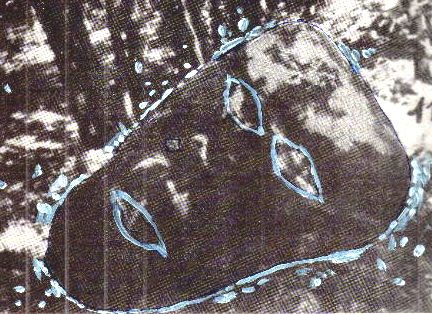
Fig. 12.1) Paleolithic anthropomorphic monolithic colossus.
This sculpture depicts a human head. The photograph was taken in 1961, and was retouched by the writer because of its poor quality. This megalith has an almost flat face; the eyes and mouth are represented by depressions, just hinted at, and there are no incisions as it seems in the white retouching on the photograph.
Height (from chin to nape) about 91 inches. Width: about 40 inches.
Location: Locality of Buschiazzi, San Pietro d'Olba, Urbe, Savona, Italy.
Material culture: Mousterian or perhaps Aurignacian.
(Photo by P. Gaietto).
(Note: even if the photo is of poor quality, it is useful for those who want to find the colossus or to classify it within the typologies of new discoveries).
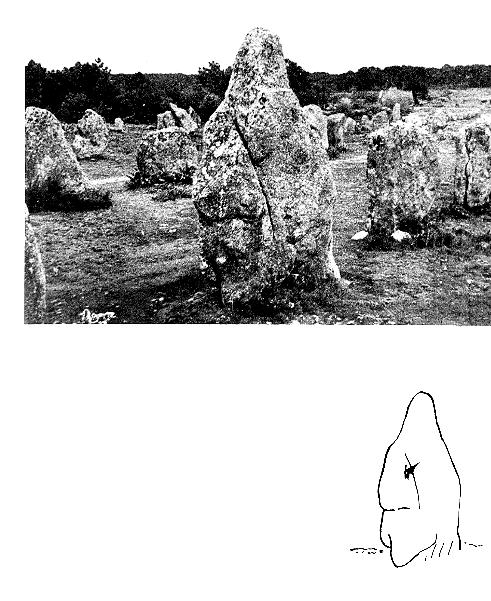 Fig. 12.1a) Stone sculpture (menhir) representing a human head with hood (see Fig. 4,23).
Fig. 12.1a) Stone sculpture (menhir) representing a human head with hood (see Fig. 4,23).
Location: Carnac, Brittany, France. Material culture: Mousterian, perhaps Upper Paleolithic.
(Photo by Licia Filingeri, 1976.)
In Brittany there are 4,750 menhirs. This area has been a place of worship from the Mousterian to the second millennium B.C. At Carnac there are 2,730 menhirs in alignments. The oldest represent heads of Homo sapiens neanderthalensis, and for this we attribute them to the Mousterian; but also those that, like this one, represent Homo sapiens sapiens, can be Mousterian, whereas paleoanthropologists have established that Homo sapiens sapiens appeared before 80,000 years ago.
Currently, the only system of cultural attribution is the investigation through the human type depicted, as there is no dating, because there are no “academic scholars” dealing with the problem of anthropomorphic menhirs. To do certain research, you need state grants which can only be given to academic researchers. A menhir like this, if raised, reveals an intact site which, at least through pollen sampling, can provide fairly precise dating given the advances made in science and technology.
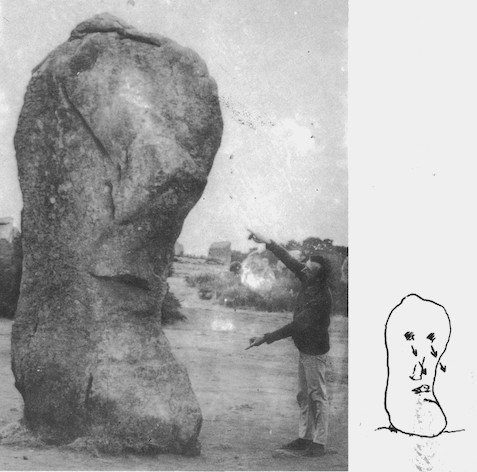 Fig. 12.1b) ) Stone sculpture (menhir) representing a human head with stylistic deformation for vertical elongation. P. Gaietto indicates the chin. (Photo by L. Filingeri, 1976).
Fig. 12.1b) ) Stone sculpture (menhir) representing a human head with stylistic deformation for vertical elongation. P. Gaietto indicates the chin. (Photo by L. Filingeri, 1976).
Location: Carnac, Brittany, France.
Material civilization: Mousterian or Upper Paleolithic (See Fig. 4.27). These types of sculptures, even if they are semi-frontal or flat behind, have the chin represented all the way around. By the chin and forehead it can be interpreted as a representation of Homo sapiens sapiens.
Among the anthropomorphic menhirs of Carnac there is a considerable variety of styles. Since style is the language of the art of a people and of a period, this means that the menhirs of different style were produced in different periods.
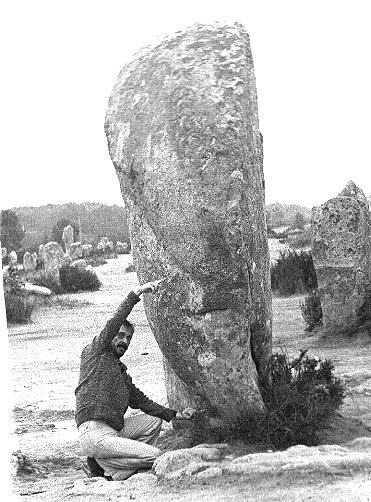 Fig. 12.1c) Stone sculpture (menhir) representing a human head, constituted of half a face, and in continuation, also of half a head. P.Gaietto indicates the tip of the nose and the chin.
Fig. 12.1c) Stone sculpture (menhir) representing a human head, constituted of half a face, and in continuation, also of half a head. P.Gaietto indicates the tip of the nose and the chin.
(Photo by Licia Filingeri, 1976.)
Location: Carnac, Brittany, France.
Material culture: Mousterian or Upper Paleolithic.
In this frontal view we see the nose; at the top, on the sides of the nose, are two orbital zones that replace the eyes; the right eye is frontal, whilst the left eye (orbital zone) is partially seen, and is better represented in this sculpture in lateral view. The forehead is wide; the cheeks are a little less; the jaw narrows at the tip.
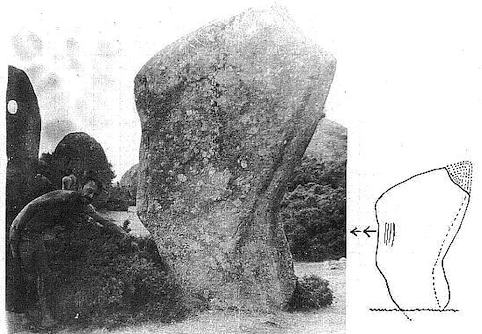 Fig. 12.1d) Stone sculpture (menhir). It represents a human head with pointed nape (hood?) that seems to us broken off (see drawing.) It is without a neck.
Fig. 12.1d) Stone sculpture (menhir). It represents a human head with pointed nape (hood?) that seems to us broken off (see drawing.) It is without a neck.
Location: Carnac, Brittany, France.
Material civilization: Mousterian or Upper Paleolithic.
The stylistic deformation is elegant and of vertical elongated type.
(Photo by Licia Filingeri, 1976.)
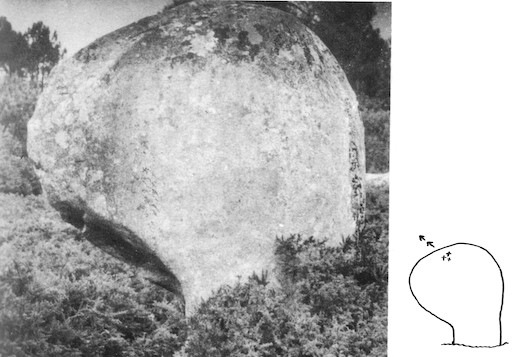 Fig. 4.37) Stone sculpture (menhir) representing a human head with neck, looking upward, and exhibiting strong stylistic deformation. It could be an artistic hybrid of man and animal.
Fig. 4.37) Stone sculpture (menhir) representing a human head with neck, looking upward, and exhibiting strong stylistic deformation. It could be an artistic hybrid of man and animal.
Height: approx. 6 feet.
Location: Carnac, Britanny, France.
Material culture: Mousterian or Upper Paleolithic.
(Photo by Licia Filingeri, 1976.)
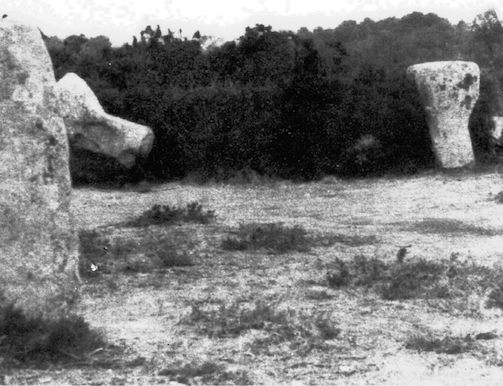 Fig. 4.38) Stone sculptures. They are two menhirs in the background, one of which has fallen to the ground. They represent (see the sculpture on the right) the human head with a long neck. The stylistic deformation is of geometric type, or more or less and, in any case, all the details of the face and head are lacking by substitutive artistic invention which achieves an extraordinary purity.
Fig. 4.38) Stone sculptures. They are two menhirs in the background, one of which has fallen to the ground. They represent (see the sculpture on the right) the human head with a long neck. The stylistic deformation is of geometric type, or more or less and, in any case, all the details of the face and head are lacking by substitutive artistic invention which achieves an extraordinary purity.
Height: approx. 8.2 feet.
Location: Carnac, Brittany, France.
Material culture: Upper Paleolithic?
(Photo by Licia Filingeri, 1976.)
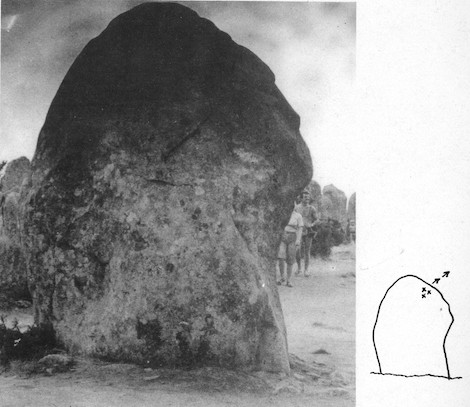 Fig. 4.39) ) Stone sculpture (menhir) representing a head with neck, looking upward.
Fig. 4.39) ) Stone sculpture (menhir) representing a head with neck, looking upward.
Height: over 13 feet.
Location: Carnac, Brittany, France.
Material culture: Mousterian or Upper Paleolithic.
(Photo by Licia Filingeri, 1976.)
The human type has mixed traits of Homo sapiens sapiens and Homo sapiens neanderthalensis.
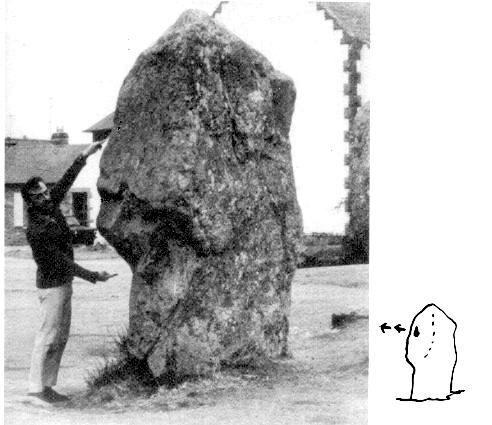 Fig. 4.40) ) Stone sculpture (menhir) representing a human head with a long neck. P. Gaietto indicates the orbital zone and the beginning of the neck.
Fig. 4.40) ) Stone sculpture (menhir) representing a human head with a long neck. P. Gaietto indicates the orbital zone and the beginning of the neck.
(Photo by Licia Filingeri, 1976.)
Location: Carnac, Brittany, France.
Material culture: Mousterian or Upper Paleolithic.
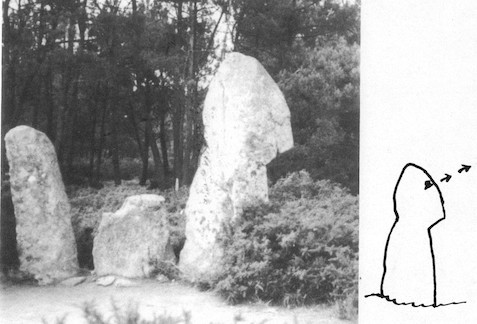 Fig. 4.42) Stone sculpture (menhir) representing a human head looking upwards, and the body.
Fig. 4.42) Stone sculpture (menhir) representing a human head looking upwards, and the body.
Height: approximately 9.8 feet.
Location: Carnac, Brittany, France.
Material culture: Mousterian or perhaps first millennia of the Upper Paleolithic.
The head is pointed; this may represent a headdress.
The most likely human type is Homo sapiens neanderthalensis.
(Photo by Licia Filingeri, 1976.)
NEXT
Index
HOME PAGE
Page translated from Italian into English by Paris Alexander Walker.
Copyright©2020 by Museum of Origins of Man, all rights reserved.










